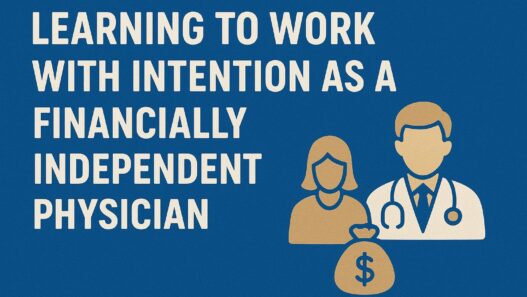The best leads aren't on Google.
They're inside Slack.
Why Communities Beat Cold Outreach
If you're a solopreneur, you've probably tried the usual suspects: cold outreach, SEO, social media.
They all work. Eventually. But they're crowded, expensive, and slow.
The opportunities that move fast, with high trust and low competition, rarely show up on public channels. They live inside private communities—Slack groups, Discord servers, niche forums, paid memberships.
Inside these spaces, people aren't browsing. They're asking urgent questions, sharing real problems, and openly looking for solutions.
If you're visible and helpful there, opportunities flow naturally. That's private community arbitrage: leveraging underpriced attention where few are looking.
The Economics of Attention
Attention is always priced.
On Google, the price is measured in ad bids. On LinkedIn, it's measured in how much organic reach the algorithm still allows.
In private communities, the price is different. It's not money, it's contribution. To earn attention there, you don't outspend. You out-help. And because most people lurk instead of contribute, the competition is surprisingly thin.
When you share proof, answer questions, or drop useful resources in these spaces, you become known quickly.
You're not shouting into the void. You're helping in rooms where people are already primed to listen.
How to Play the Arbitrage
Step 1: Pick the Right Communities
Not all groups are worth your time. Some are ghost towns. Others are full of noise. The key is to pick three where your ideal buyers already spend time.
That might be:
- A paid Slack group for startup founders.
- A niche Discord for indie app builders.
- A private membership forum for coaches.
Look for communities where people are actively asking the kinds of questions you can solve.
Step 2: Contribute Before You Pitch
Most people join communities and immediately look for ways to drop their link. That's spam. It's obvious. And it gets ignored.
Instead, focus on consistent contribution. Answer questions with screenshots, checklists, or mini-teardowns. Share resources without expectation. If you have a blog post or tool, link it sparingly and only when it directly helps.
The fastest way to build trust is to be useful without agenda.
Step 3: Seed Proof Naturally
Over time, you want to create a trail of proof—examples of your work, case studies, small wins.
The goal isn't to brag. It's to make it clear that you know your stuff.
For example, instead of posting “Here's my new pricing guide, check it out,” you might reply to someone asking about pricing with: “Here's a one-page framework I use with clients—feel free to adapt it.” That same framework can link back to a deeper resource if they want more.
Step 4: Capture Leads Without Selling Hard
If you're consistently visible and useful, people will start reaching out directly. They'll DM you, tag you in threads, or refer you.
That's the payoff of community arbitrage.
You don't need to pitch aggressively. Your presence has already done the work.
Why This Works So Well
Communities collapse the trust barrier.
On LinkedIn or X, you're just another profile in a crowded feed. In a private community, you're a peer. People assume you belong because you're inside the same walls. That shortcut builds instant credibility.
Add consistent contribution, and you move quickly from stranger, to trusted member, to go-to expert.
Opportunities follow that path naturally.
Case Snapshot: The Career Coach in Slack
A career coach joined two HR-focused Slack groups.
Instead of selling, she answered questions daily. Sometimes with quick notes, sometimes with one-page frameworks.
After two weeks, she shared her “Interview Map,” a simple visual she used with clients.
Three people DM'd her asking if she offered coaching. Within a month, she had three new clients—all inbound, no cold emails.
Her visibility in a 500-person Slack channel outperformed months of LinkedIn posting.
That's the power of underpriced attention.
The Psychology of Community Arbitrage
Most people underestimate the value of small, contained spaces.
They think, “Why bother with a group of 300 when I can post to 10,000 on LinkedIn?”
But smaller spaces come with higher density of trust. The ratio of signal to noise is better.
And when someone asks a question in a community, they're already problem-aware and seeking a solution.
That's different from scrolling through a feed.
Common Mistakes to Avoid
- Lurking forever: If you don't contribute, nobody knows you exist.
- Over-contributing at once: Spamming five posts in a day looks desperate. Steady, consistent presence works better.
- Pitching too early: Communities have long memories. Once you're “that person who only sells,” you don't recover.
Action Checklist
- Identify three private communities where your buyers hang out
- Spend the first two weeks only answering questions and contributing
- Create one small, sharable asset (framework, checklist, calculator) to drop when relevant
- Track who engages, since those are your warm leads
- When people DM you, move the conversation to a call or email
Final Words
Most solos fight for attention in the noisiest, most expensive places.
The smarter play is to find where attention is underpriced. Today, that's private communities.
The opportunities inside these spaces aren't louder, they're quieter.
But they're faster, warmer, and stickier.
You don't need a massive following to win. You just need to be visible where others stay silent.
Don't chase the crowd. Go where the conversations are already happening.
The post Private Community Arbitrage: Where the Real Opportunities Hide appeared first on MoneyMiniBlog.



















